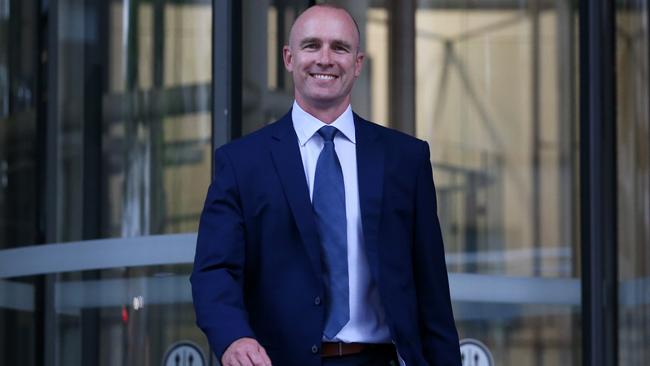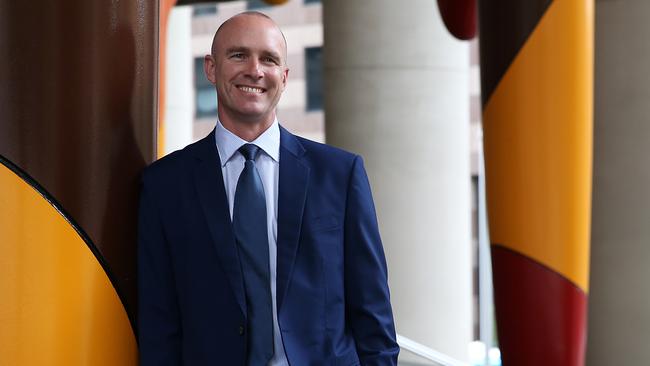Carbon credit lifts Tribeca Investment Partners fund to 60 per cent return in three months
Tribeca Investment Partners finds the transition to net-zero by 2050 can be a lucrative one as it backs green energy, metals.

A surge in the price of carbon credits is fuelling some truly impressive returns at Tribeca Investment Partners’ newest endeavour – the money manager’s 2050 strategy fund has posted a 60 per cent rise for the first three months of its life.
Led by Tribeca’s head of research Todd Warren and believed to have funds under management of $100m, the fund was established in October to capitalise in the “burgeoning universe of investment opportunities represented by decarbonisation”.
And it could deliver even stronger returns: half of its funds are invested in voluntary carbon credits, acquired for well under the current price of about $US15 ($21) per tonne of CO2 emissions. Warren says that price could climb to $US50 within a year and reach “well over” $US100 per tonne of carbon dioxide-equivalent by 2030.
“Market forces will drive the price higher. Last year was a bit of a watershed and saw not just corporate buyers in the market but also financial institutions and investors who drove the price up from $5 to $15. And it’s moved higher again in January,” Warren says.
“The price will continue to move higher until we hit levels where there’s a materially higher amount of supply.”
But that supply is constantly constrained by companies permanently retiring the credits. Every year about 80 per cent of all carbon credits are retired – that is, removed from the market forever.

“Particularly in Europe, your heavy-emitting industries, whether it’s oil companies or airlines, are buying voluntary credits and voluntarily retiring them,” he says.
“Their investors are demanding that of them, and they’re being rewarded for doing that … it started in Europe and it’s now moved to North America, where the biggest companies … Microsoft, Apple, Google, are all buying nature-based voluntary credits.
“They’re only going to increase their purchases of nature based voluntary credits.”
Tribeca’s 2050 strategy is not open to everyone – a minimum $500,000 investment is required, with no redemptions for 3 years.
The fund closed to new investors on Tuesday, and has a management fee of 2 per cent and a performance fee of 25 per cent.
The 60.8 per cent return for the last three months of 2021 – its first ever quarter – was net of all fees.
But with COP26 only adding to the pressure on carbon emitters, as well as a near-term technology gap holding up much of their ability to meet those targets, carbon credits will become the easy pickings for companies to get their emissions down, Warren predicts. The question is how long companies will voluntarily retire the carbon credits they’re buying when prices are rising so quickly.
“Our modelling suggests that FTSE 100, S&P 500, ASX 200 companies can afford to pay more than $US100 for voluntary credits with a max 1 per cent to 2 per cent impact on margins. So the ability to pay much higher carbon prices is there,” Mr Warren said.
“The next big level we’re looking for in the voluntary market on pricing is $US50. That’s a fundamentally supported level. And we’re very comfortable saying we think we’ll see that sort of price this year.”
Tribeca has such a strong foothold in carbon credits that if it were to trade on the secondary market, it would account for 20 per cent of the entire global market. The fund turned over about $200m in carbon credits last year alone. Instead, Tribeca accesses inventory direct with project developers, often in emerging economies. Even this is getting harder in a young market.
“There’s about half a dozen big institutional-grade project developers we’ve bought from. From what we can see, they’ve sold all of their inventory of issued credits.
“And we’ve bought a material amount of their future supply as well. There are structural issues with finding new supply because of demand and it’s taking longer for new credits to be issued, so it’s almost impossible to find new supply right now,” he says.
Even with corporates retiring much of today’s supply, liquidity will improve over time as the market matures, he predicts. It will have to if industry predictions are anything to go by: Goldman Sachs and other investment banks have forecast carbon credits will grow 175 to 200 times over the coming decades.
The strategy now has a portfolio of 28 different credits, the majority of which are REDD+ nature-based carbon credits, which are credits associated with the reduction in emissions from deforestation and forest degradation.
“Some of the price moves we have seen since October include the Rimba Raya and Southern Cardamom REDD+ credits rising more than 100 per cent, and Kasigau REDD+ up 90 per cent.”
It has also allocated a “material component” of the portfolio to “cookstove” carbon credits. These projects are designed to reduce the emissions that come from the 2.4 billion people using wood and charcoal for cooking purposes, Warren says. “The logic behind cookstove projects is to (1) reduce carbon emissions from the direct burning of wood and charcoal in the cooking process and to (2) reduce deforestation,” he says.
While carbon credits accounted for 35 per cent of the fund’s 60 per cent quarterly return, it invested in other decarbonisation opportunities to spread the risk, including green metals, green finance and green food.
“In that first quarter we saw barbell returns, very hefty numbers. And we’re confident on the outlook for the strategy. Obviously carbon credits were very strong in Q4, but so were green metals. Look at the price of lithium, that continues to hit all time highs,” Warren says.
Over the three months, its largest returns in the green metals space came from holdings in Green Technology Metals and AIC Mines.
Green Technology Metals owns a portfolio of lithium deposits located in southern Ontario, Canada, and listed on the ASX in November. Its share price has jumped 142 per cent since then.
“Its projects have access to hydro power, are located in a supportive jurisdiction with both governmental and local community support and have significant exploration upside over and above the existing resource.
“With a proven and very well-respected management team, we remain confident this name could trade significantly higher as the market recognises the scale of the potential opportunity here,” Warren says.
Other major holdings include Cobram Estate Olives, which has seen its share price drop 9 per cent in a month, and Global Lithium Resources, up 300 per cent since mid-October. The biggest detractor was Aussie bitcoin miner Iris Energy, which has tumbled.







To join the conversation, please log in. Don't have an account? Register
Join the conversation, you are commenting as Logout